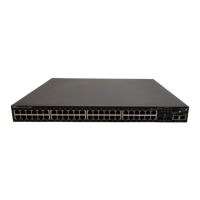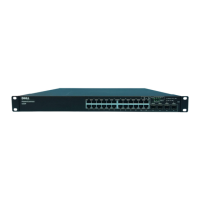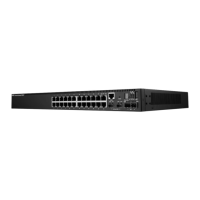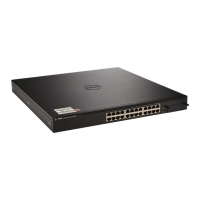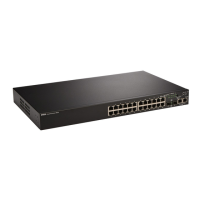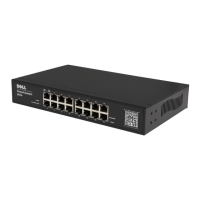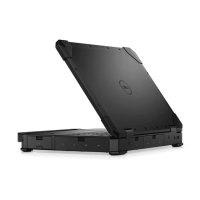576 Configuring VLANs
Configuring the PVID for an interface is useful when untagged and tagged
packets will be sent and received on that port and a device connected to the
interface does not support VLAN tagging.
GVRP
The GARP VLAN Registration Protocol (GVRP) helps to dynamically
manage VLAN memberships on trunk ports. When GARP is enabled,
switches can dynamically register (and de-register) VLAN membership
information with other switches attached to the same segment.
Information about the active VLANs is propagated across all networking
switches in the bridged LAN that support GVRP. You can configure ports to
forbid dynamic VLAN assignment through GVRP.
The operation of GVRP relies upon the services provided by the Generic
Attribute Registration Protocol (GARP). GVRP can create up to 1024 VLANs.
For information about GARP timers, see "What Are GARP and GMRP?" on
page 708.
Double-VLAN Tagging
For trunk ports, which are ports that connect one switch to another switch,
the PowerConnect 7000 Series switches support double-VLAN tagging. This
feature allows service providers to create Virtual Metropolitan Area Networks
(VMANs). With double-VLAN tagging, service providers can pass VLAN
traffic from one customer domain to another through a metro core in a
simple and cost-effective manner. By using an additional tag on the traffic,
the switch can differentiate between customers in the MAN while preserving
an individual customer’s VLAN identification when the traffic enters the
customer’s 802.1Q domain.
With the introduction of this second tag, customers are no longer required to
divide the 4-byte VLAN ID space to send traffic on a Ethernet-based MAN.
In short, every frame that is transmitted from an interface has a double-VLAN
tag attached, while every packet that is received from an interface has a tag
removed (if one or more tags are present).
In Figure 21-2, two customers share the same metro core. The service
provider assigns each customer a unique ID so that the provider can
distinguish between the two customers and apply different rules to each.
When the configurable EtherType is assigned to something different than the

